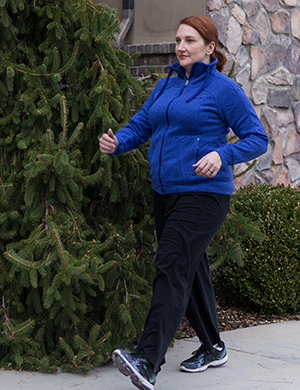How to Help Prevent Osteoarthritis
Arthritis is a condition that causes pain and swelling (inflammation) in your joints. There
are more than 100 forms of arthritis and related diseases. A joint is a place in the
body where two bones meet. Arthritis may also affect other body tissue near the joints.
This includes muscles, tendons, and ligaments. Some forms of arthritis cause symptoms
throughout the body.
Osteoarthritis (OA) is one of the most common types of arthritis. It's sometimes called
degenerative joint disease or wear-and-tear arthritis. In OA, the cartilage in your
joints wears away. Cartilage covers the ends of bones. It acts as a cushion. Bone
rubs against bone if too much cartilage wears away. The joint changes and inflammation
in OA cause pain, stiffness, and trouble with movement. OA most commonly affects the
knees, hips, hands, and spine.
Can you prevent OA?
OA is a result of using your joints every day. The older a person gets, the more wear-and-tear
happens. You may not be able to fully prevent OA. But a healthy lifestyle may help
your overall health and the health of your joints. It is important to maintain a healthy
weight, control blood sugar, exercise, and protect joints from injury. This may make
it less likely that OA will develop. These things can also help OA from getting worse.
Keep a healthy body weight
Extra weight puts stress on your joints. It can most hurt your hips, knees, ankles,
and feet. Fat tissue also makes proteins that cause swelling in the joints and changes
in the cartilage. Talk with your healthcare provider about safe ways to lose weight
if you are overweight.
Control your blood sugar
High blood sugar levels raise your risk of getting OA. Get your blood sugar levels
checked regularly if you have diabetes. Talk with your healthcare provider about ways
to manage your levels if they are too high.
Be active every day

Exercise is a good way to prevent joint problems. It helps to keep joints from getting
stiff. It keeps muscles strong. It's also an important part of treating arthritis.
Try to get at least 30 minutes of exercise on most days. Talk with your healthcare
provider about safe exercise for you.
You can also try the Arthritis Foundation's Walk With Ease program. For more information or to find a Walk With Ease Class in your area, contact the
Arthritis Foundation Helpline at 800-283-7800.
Prevent injury to your joints
Joint injuries increase your risk of getting OA. Start slowly and work up to your
goal when you exercise. Each time you exercise, take 5 to 10 minutes to warm up with
gentle movements. This helps to prevent injuries to muscles, joints, ligaments, and
tendons.
Think about changing your exercises and activities each day. You will use different
parts of your body. This will help prevent stress to the same joints every day.
Be careful with your daily activities. Some activities put extra stress on joints.
For instance, carry heavy bags of groceries close to your body in the crook of your
arm instead of holding them with your hands.
Use exercise equipment and protective gear as instructed. Make sure your safety gear
is comfortable and fits well.
Pay attention to pain
You may have done too much if you have joint pain that lasts 1 to 2 hours after activity
or exercise. Do less next time. Take more breaks. Rest the joint. Use an ice pack
to relieve pain. Call your healthcare provider if it does not get better with time.
Consider getting an assessment by a physical therapist to learn the best exercises
to protect your joints.
Talk with your healthcare provider about using ice packs and pain medicine before
and after you exercise.